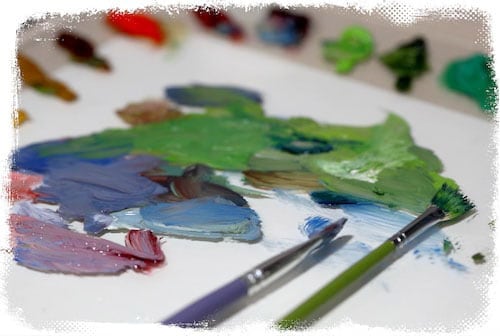
Floral and Tree
Floral and Tree
1 to 30 out of 2709 items
1 to 30 out of 2709 items
Flowers have always played a significant role in artistic creation. Fertility, rebirth, and reproduction are all represented by these symbols. Since the beginning of human creative endeavors, humans have depicted nature and its inhabitants, from prehistoric cave drawings to biblical depictions describing Eden as a natural paradise. Over the years, painters have illustrated the many distinct meanings of roses, irises, tulips, carnations, and flowers. There aren't enough superlatives to describe how crucial they are to the development of western art. Some of the most renowned paintings in the world, like Van Gogh's Sunflowers or Monet's Waterlilies, are of flowers. Many distinct meanings may be attached to a single flower. These may be as extreme as being born or dying, being pure or promiscuous, or being in love or trouble. Flowers, with their myriad of symbolic associations and dazzling palette options, have long served as inspiration for creative types.
The Dutch would also depict fresh flower bouquets as a symbol of their nation's might and the splendor of the natural world. These bouquets and corsages may have fooled the eye, but they were more likely creative imaginations that brought together flowers that never would have grown simultaneously. Even though vanitas's pictures demonstrated the transience of all life, these overflowing bouquets proved that art has the power to halt the passage of time and give flowers immortality.
Floral paintings were towards the bottom of the art hierarchy before the 1800s. Landscapes and still lifes were looked down on because huge historical paintings were viewed as the most significant genre of art. These distinctions were made away with by the French realists and impressionists, who considered ordinary life and objects worthy of artistic attention.
French artist Édouard Manet was a pioneer of this style. One-fifth of his production was devoted to still lifes, and he confidently said that they are "the touchstone of painting." Nearing the end of his life in 1880, Manet focused mainly on floral subjects in his artwork. He made 16 little paintings that portrayed the flowers his friends bought him while he was unwell. Watercolors of roses and irises that he produced for his correspondence are also included.
Like Manet, many Impressionists and Post-Impressionists depicted flowers with significant significance. They didn't consider the cultural or religious importance of their themes. In the summer of 1886, Vincent van Gogh painted his first sunflowers. He repainted sunflowers two years later when he hosted the French artist Paul Gauguin at his yellow home in Arles. Van Gogh hung a series of brilliant yellow sunflower paintings in Gauguin's bedroom. It's possible that Van Gogh did this as a friendly gesture or to brag about his talent as an artist.
Van Gogh first painted the sunflower for Gauguin, but he adopted it as his style. According to a letter he sent to his brother Theo in 1889, he claimed ownership of a sunflower.
In many paintings, trees, from street trees to trees in parks to trees in forests and rainforests, reach out their branches. Various types and phases of development from a wide variety of tree species are shown globally. Their roots extend below the surface while their branches soar far into the air.
Trees have stood as significant symbols in mythology, folklore, and culture for a long time. "The world tree," also known as the cosmic tree, is revered as the origin of all life on Earth. It goes by many other names, including the Tree of Life, the Sacred Tree, and the Tree of Knowledge.
The Tree of Life represents the interconnectedness of all things in creation. This is seen in Gustav Klimt's well-known artwork, The Tree of Life.
The most renowned and prolific floral and tree artists include Mary Vaux Walcott (American, 1860 -1940), Marianne North (British, 1830 -1890), Martin Johnson Heade (American, 1819 -1904), Joseph Stella (American, 1880 -1946), Pierre Auguste Renoir (French, 1841 -1919), John La Farge (American, 1835 -1910), Charles Demuth (American, 1883 -1935), Raoul de Longpre (French, 1843 -1911), Christian Rohlfs (German, 1849 -1938), among others.






























